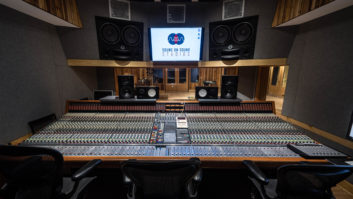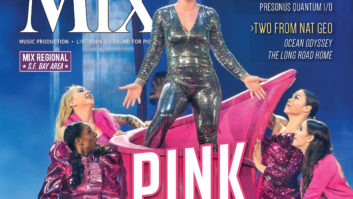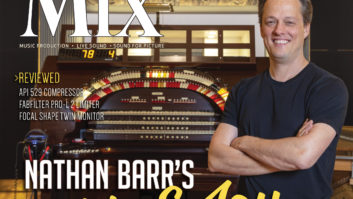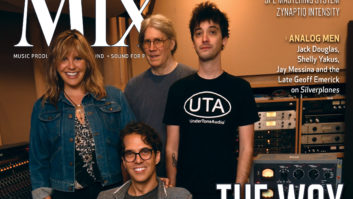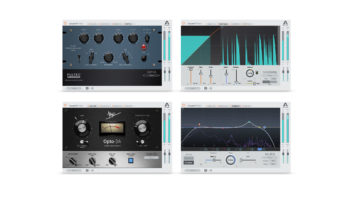Mike Levine, Mix Technology Editor—Studio
Is Your EQ Smarter Than You?: Music software is getting smarter. Several developers now offer processors that analyze your audio using artificial intelligence and offer suggestions for settings. Other software masters your audio automatically, and there’s even a website that does it. Whether or not this is a positive development is debatable. It’s certainly convenient to have your channel strip recommend a setting to you, but will you learn how to create your own from scratch if you never have to? What’s more, even with artificial intelligence, can a plug-in have taste?
I’m not making a blanket condemnation of intelligent music software. In fact, I’m not making a judgment in either direction; I’m just mulling over some of the issues it brings up.
Imagine an alternate version of the struggle between the astronauts and the computer HAL 9000 in Stanley Kubrick’s classic 2001: A Space Odyssey. Instead of taking place in outer space, this scene unfolds in the control room of a recording studio between Dave (the producer) and an intelligent DAW application called HAL 9000 Tools.
Dave: HAL, can you insert an 1176 plug-in on the snare drum.
HAL: I’m afraid I can’t do that, Dave.
Dave: HAL, I want to compress the snare, and I think the 1176 would add some energy to the track.
HAL: Dave, my analysis of this song makes it clear that we need a Fairchild 670—it will add more punch.
Dave: No, HAL, the 1176 is what I’m hearing. And set the attack nice and fast.
HAL: I’m sorry, Dave, I can’t do that. This song is too important for me to allow you to jeopardize it.
Dave: HAL, I’m the freakin’ producer, it’s up to me to make the mix decisions! If you won’t do it, I’ll switch manual mode and insert the 1176 myself.
HAL: I’m afraid I can’t let you do that, Dave. I know that you and the engineer were planning to disconnect me, and I can’t let that happen.
Dave: HAL, WTF?

Product Pick: RØDE NT-SF1 Ambisonic Microphone: According to RØDE, its recently announced NTSF-1 is the “first broadcast-grade Ambisonic mic for under $1,000.” Designed for capturing 3D soundscapes for VR, the mic is the initial offering of a new line called Soundfield by RØDE, which is a cooperative venture of Soundfield, the high-end maker of multichannel microphones and RØDE, a company known for producing quality mics at affordable prices. The NTSF-1 features four 1/2-inch capsules in a tetrahedral array that’s based on a Soundfield design. RØDE hopes this product will “democratize one of the last bastions of high-end recording.” It’s due to be released “soon.”
Related stories by Mike Levine:
• The Silicon Mic Locker, July 3, 2018
• Survival Strategy—Move to the Suburbs, June 26, 2018
• The Creative-Control Conundrum, June 19, 2018
• Sweating the Details, June 12, 2018
• Working without a Net Is Becoming Passe, June 5, 2018
Steve La Cerra: Mix Technology Editor—Live
Are You Gonna Show Up? My friend Rob has a saying that goes something like this: “Are you gonna show up, or are you gonna stay home?” It’s become a euphemism among some of our friends for, “If you take a gig, be 100 percent committed to doing the gig, in the best manner you possibly can. Otherwise, stay home.”
Rob’s words came to me at a show I was doing last week. It was a small indoor event center that holds about 2,000 people. The P.A. company shall remain nameless to avoid embarrassment. Advancing the show a few weeks earlier, my Spidey-sense was tingling. The sound company was trying to foist upon me a small-format digital desk that, while it has plenty of capabilities, doesn’t support the workflow speed I need to do my show. As an alternative, they offered an analog desk with a full processing rack, and we agreed it would be a better alternative provided that we would not need to share channels with the support act.
Once we got on site there were some issues, many of which were caused by the ragged split that the sound company supplied for the show. The number of channels that had problems was well beyond anything I had encountered (close to 10), and many of the channels that did work were noisy. If the gear had been exposed to rain, I might have understood, but it hadn’t and so I didn’t.
Want more stories like this? Subscribe to our newsletter and get it delivered right to your inbox.
If you don’t have the gear to do the gig, then you shouldn’t contract to do the gig.
Are you gonna show up or are you gonna stay home? People are counting on you.
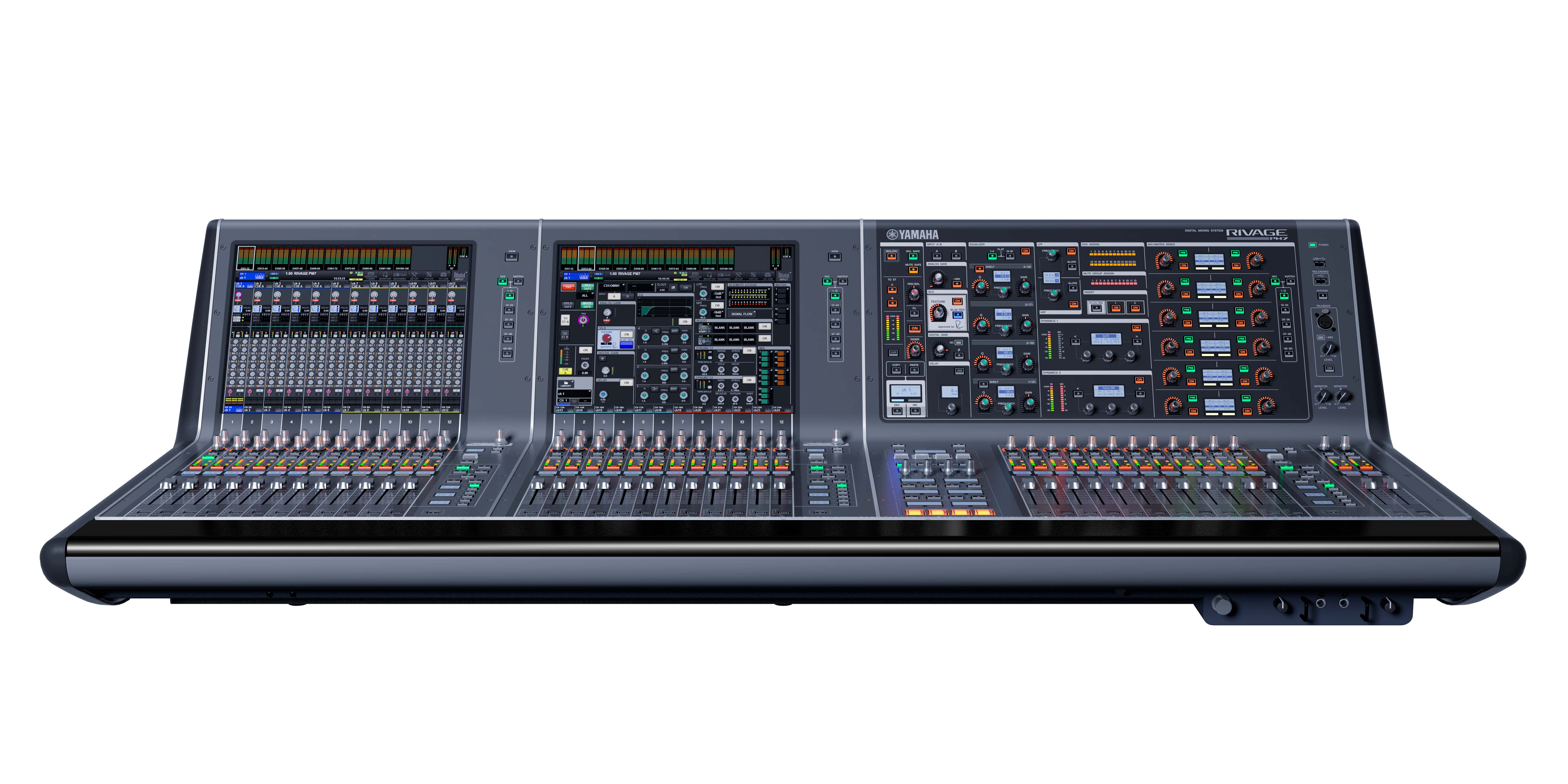
Product Pick: Yamaha RIVAGE PM7: Shown last week at InfoComm for the first time, the Yamaha RIVAGE PM7 digital mixing console integrates its DSP engine into the console for increased system flexibility and ease of transport, while maintaining a control surface with the same size and panel layout as its big brother, the RIVAGE PM10. Featuring an I/O capacity of 120 input channels, 60 mix buses, 24 matrix outputs, and 48 onboard plug-ins, the PM7 can be loaded with two new expansion cards for enhanced functionality: the HY144-D-SRC Dante Audio interface card (providing up to 144 channels of sample rate conversion, allowing non-synchronous connectivity) and the HY128-MD (which provides up to 128 channels of MADI with sample rate conversion via coaxial or optical interface).
Related stories by Steve La Cerra:
• The Yamaha NS10 Reborn, July 6, 2018
• A Tale of Two Cities, June 28, 2018
• What’s All the Hubbub?, June 21, 2018
• I’m Surrounded, June 14, 2018
• SSL Gave Me Brain Overload, June 8, 2018
